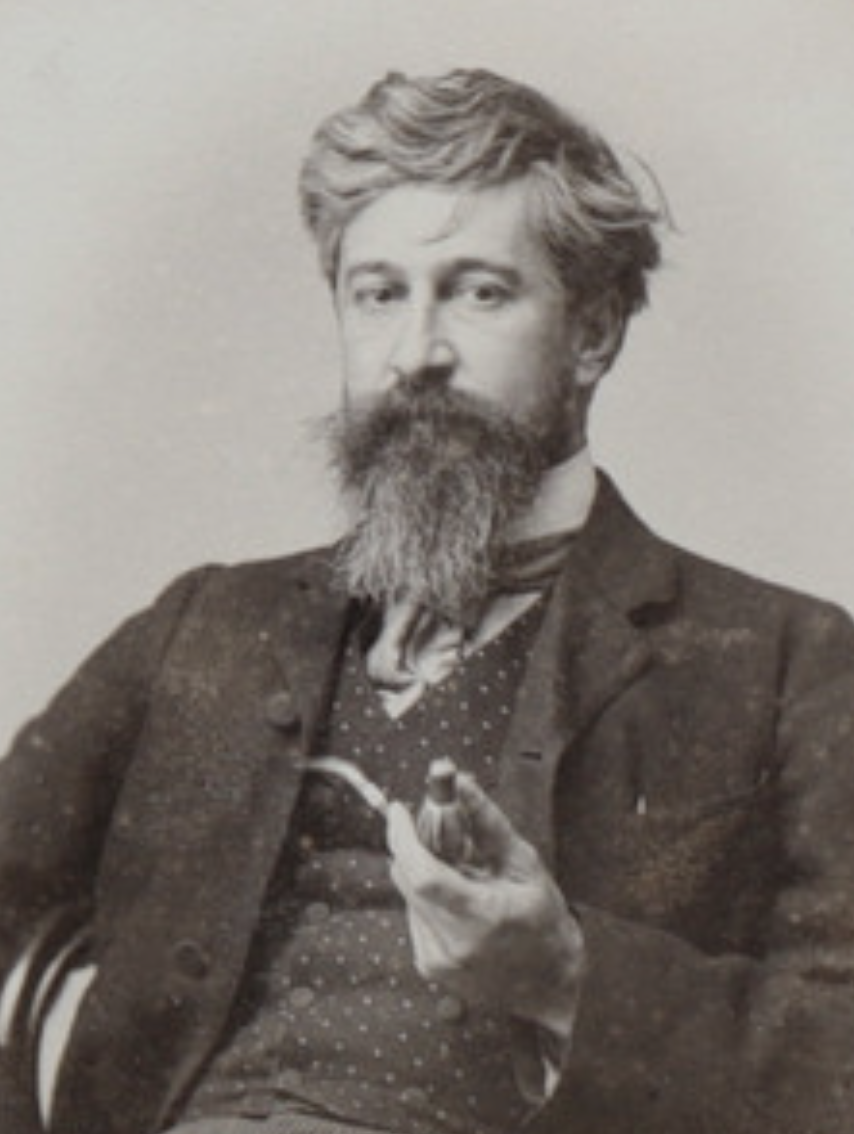A multifaceted artist and Modernist icon, he breathed life into culture and festivities in Llinars and became one of the town’s most charismatic holidaymakers.
Santiago Rusiñol Prats (Barcelona, 1861 – Aranjuez, 1931) was a painter, writer, journalist, playwright and collector who left behind an enormous legacy in the form of cultural heritage.
He first came to the town in 1883, which is when he met Lluïsa Denís, who spent her summer holidays there. The couple married three years later and, the year after, gave birth to their only daughter, Maria. A few months after this, his lack of interest in inheriting the family textile business and his desire to paint, write and discover the world led him to break away from the family. Rusiñol spent a number of years in Paris, which became the setting for much of his creative career.
He renewed contact with his daughter in 1891, but it was not until 1899 that he once again lived with Lluïsa, in part due to a serious illness that cost him his kidney and almost his life. It was during this period that his presence in Llinars was most assiduous: he settled into the house they rented on Carrer Nou and spent the periods of good weather there. Despite producing only two paintings during his time in the town, he proved much more prolific in terms of the comments he published in the weekly magazine L’Esquella de la Torratxa.
Lluïsa, a playwright, painter and composer, built a large house on the outskirts of the town in 1922, a haven and quiet place in which the pair could continue to pursue their artistic endeavours. As a widow, she frequented the Can Bachs dance hall, where she was often heard playing the piano and singing.
Don Santiago, as he was known around town, was beloved by everyone, particularly due to the cultural events and festivities he organised. These included donkey races with professional riders, a bullfight under a special marquee and hot air balloon rides, which provided villagers the chance to contemplate Llinars from above. Rusiñol is remembered painting and writing in the Can Taulats café and the café inside the Can Gay cinema. The novel En Josepet de Sant Celoni was written in this café during the summer of 1917.
The artist had a reputation around town as a night-owl; it was said that he could be heard complaining that the bars closed too early and that even his incessant talking could not keep the barman from falling asleep on him.
In 1926, Llinars organised a weekend-long tribute to him to celebrate his deep connection with the town. He himself was on hand to inaugurate a stretch of Carrer Nou that would henceforth bear his name.
